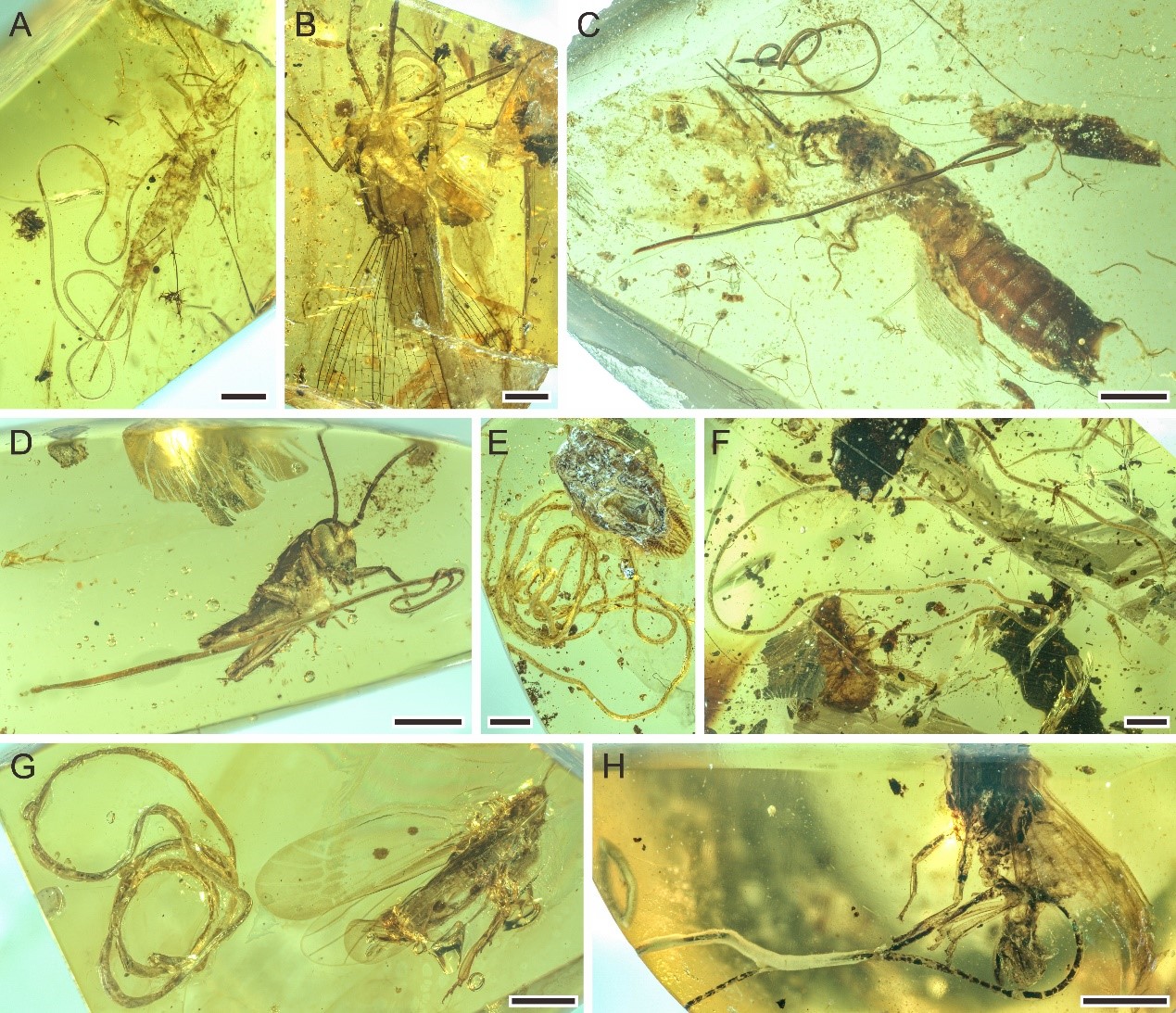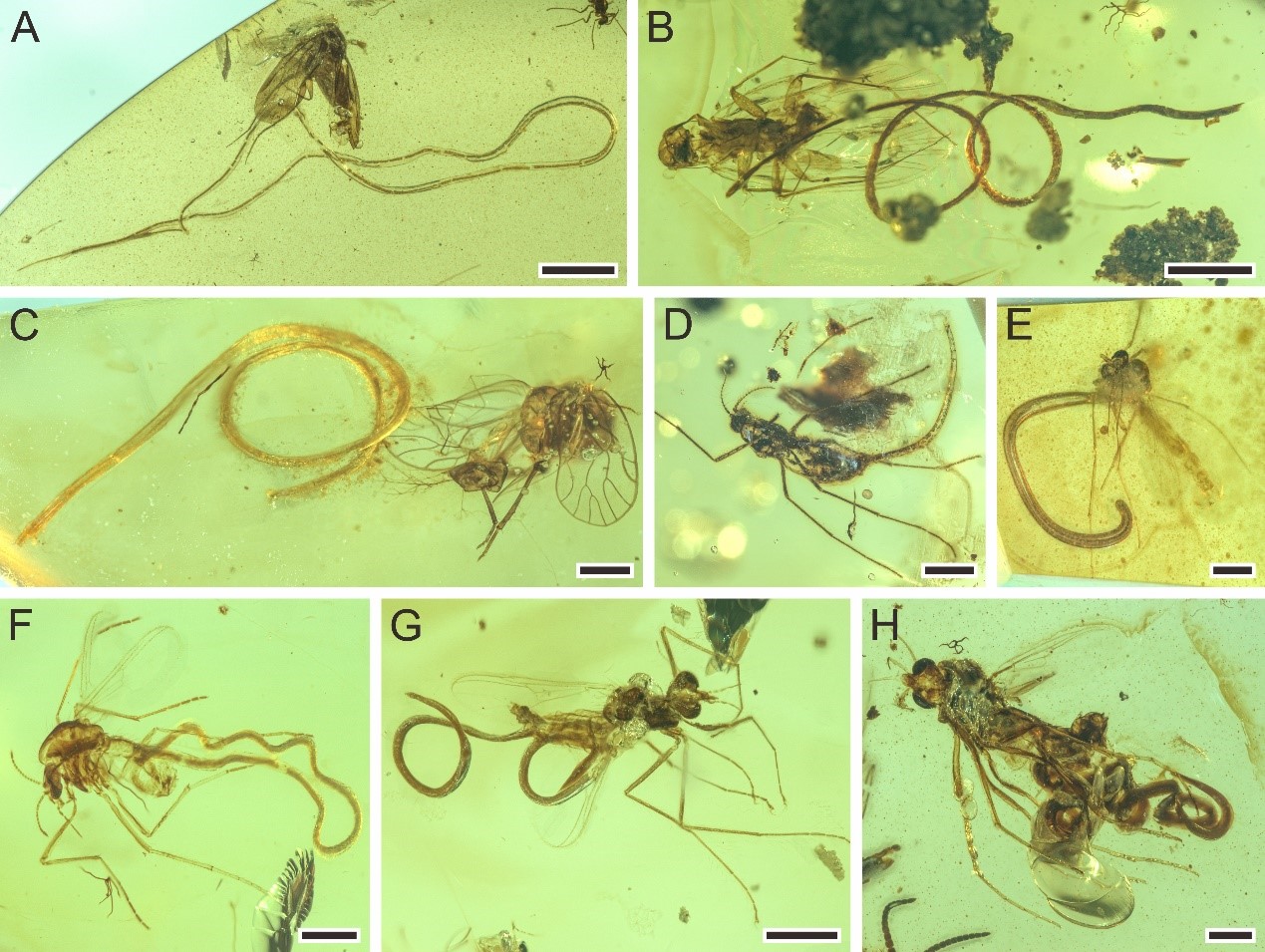Nematodes (roundworms) are distributed worldwide in almost all habitats. The Mermithidae, a family of nematodes larger than others, are obligate invertebrate parasites which occur in insects, millipedes, crustaceans, spiders, molluscs and earthworms. They can affect the morphology, physiology, and even the behaviour of their hosts.
Fossils of mermithid nematodes were mainly discovered from Eocene Baltic amber (11 species) and Miocene Dominican amber (9 species), but only four pre-Cenozoic species have previously been recorded. Therefore, little is known about their early evolution of parasitism.
Recently, researchers led by Prof. WANG Bo from the Nanjing Institute of Geology and Palaeontology of the Chinese Academy of Sciences (NIGPAS), in collaboration with colleagues from the U.S. and the U.K., have discovered 16 new mermithids associated with their insect hosts from mid-Cretaceous (about 100 million years ago) Kachin amber.
The study was published in eLife on July 14. It reveals what appears to be a vanished history of nematodes that parasitized Cretaceous insects.
In this study, 16 new mermithids associated with their insect hosts were described, including nine new species, which triples the diversity of Cretaceous Mermithidae (from 4 to 13 species). Meanwhile, according to new records of this study, nine insect orders are now known to have been infested by mermithid nematodes in Kachin amber and this number is even higher than that of Baltic amber and Dominican amber (six and three insect orders, respectively).
"This result suggests that mermithid parasitism of insects was actually widespread during the mid-Cretaceous, and probably already played an important role in regulating the population of insects in Cretaceous terrestrial ecosystems," said Prof. WANG, corresponding author of the study.
The researchers found that 12 of these 16 mermithids of the Kachin amber included previously unknown hosts, such as bristletails (Archaeognatha), barklice (Psocodea), and planthoppers (Perforissidae). This study also provides the first fossil records of mermithids parasitizing dragonflies (Odonata), earwigs (Dermaptera), crickets (Orthoptera) and cockroaches (Blattodea), four host associations predicted from extant records but without fossil evidences.
In addition, among the insect hosts of mermithids preserved in Kachin amber, only one of the nine orders (Diptera) is holometabolous, whilst it is four out of six in Baltic amber and all three in Dominican amber.
The situation is similar when referring to the amount of nematode parasitism. In Kachin amber, only about 40% of the hosts are holometabolous, while this percentage increases to 80% in Baltic and Dominican ambers. Holometabola are the most important hosts of extant mermithids as well as all invertebrate-parasitizing nematodes and this hexapod subgroup dominated the insect fauna during the Cretaceous.
This study indicates that nematodes had not completely exploited Holometabola as hosts, and non-holometabolous insects were more available as hosts in the mid-Cretaceous. The widespread association between nematodes and Holometabola might have formed later.
"This study provides a glimpse into the structure of ancient parasitic nematode-host associations and their evolution over the past 100 million years," said LUO Cihang, Ph.D. candidate from NIGPAS and first author of the study. "It also brings new opportunities to study the evolution of parasitism through the medium of amber and provides direct evidence to reconstruct Cretaceous terrestrial ecosystem."
This research provided a good example to study the coevolution of nematodes and their host and helped scientists to better estimate the extinction risk of modern species, according to a commentary.









